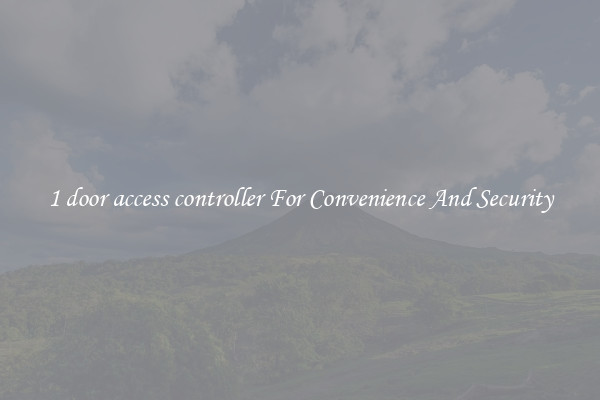1 door access controller For Convenience And Security
Technology has revolutionized the way we live our lives, making everyday tasks more convenient and secure. One such technological innovation that has been gaining popularity is the door access controller. This device not only provides convenience but also enhances security in residential and commercial buildings.

A door access controller is a device that allows authorized individuals to gain entry into a building or certain rooms within a building. It works by restricting access to only those with the proper credentials, such as a keycard, passcode, or biometric information. This ensures that only authorized personnel can enter certain areas, providing an added layer of security.
One of the main benefits of a door access controller is convenience. Gone are the days of fumbling for keys or worrying about lost or stolen keys. With a door access controller, all you need is your keycard or passcode to gain entry. This not only saves time but also eliminates the need for physical keys, which can be easily lost or misplaced.
Another benefit of a door access controller is enhanced security. Traditional locks can be easily picked or tampered with, leaving your property vulnerable to break-ins. A door access controller provides a more secure option, as it requires specific credentials to gain entry. This reduces the risk of unauthorized individuals entering the building and ensures that only those with the proper authorization can access certain areas.
In addition to convenience and security, a door access controller also offers flexibility. You can easily add or remove authorized users, change access levels, and monitor entry and exit times. This allows for better control over who has access to your property and when.
Overall, a door access controller is a valuable investment for both residential and commercial buildings. It provides convenience, enhances security, and offers flexibility in managing access to your property. With technology constantly evolving, this device is a must-have for those looking to improve the safety and accessibility of their buildings.

View details

View details

View details

View details








